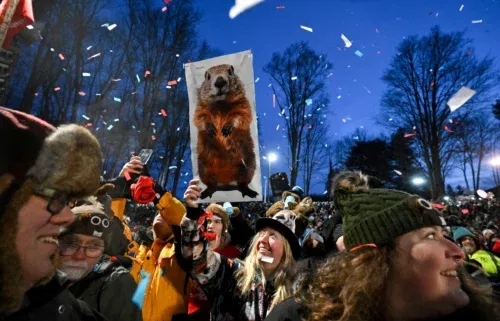El Niño continues to dull Midwest winter

By Jared Shelton News-Press NOW meteorologist
Blasts of bitter cold and several hits of accumulating snow made for a wintry January across Northwest Missouri and Northeast Kansas. As the second half of winter rolls on, it’s becoming more evident that last month’s weather was an outlier among a cold season that’s otherwise featured above-average temperatures and below-average snowfall for a large chunk of the United States.
Before the arctic spells of mid-January froze most of the Great Plains and Midwest for several weeks, December was abnormally warm for millions within these regions. December snowfall was also minimal across the northern two-thirds of the country, and essentially nonexistent here in the Central Plains through Christmas Eve.
Fast forward to February, the less-than-wintry pattern has resumed across many of the same areas, including locally. According to the National Weather Service’s KC/Pleasant Hill office, Kansas City recently felt the warmest start to February ever. Shattering previous numbers from the 136-yearlong record, the first nine days of February averaged 18 degrees above normal — temperatures more suited for the end of March or beginning of April. Not surprisingly, the last month of winter has also seen snow less across the northern tier of Missouri, with the first chance of a few February snowflakes arriving late this week.
Despite a lack of snow in December, and so far this month, January’s period of above-average snowfall has kept Northwest Missouri on track in terms of seasonal totals. Other parts of the country are not so lucky. In fact, most of the Upper Midwest and Great Lakes are in the midst of a major snow drought. Large swaths of Michigan, Wisconsin, Minnesota and the Eastern Dakotas are bare of snowpack, most of these areas receiving only 15% to 35% of average snowfall so far this season.
The infamous El Niño pattern of 2023-24, marked by abnormally warm sea surface temperatures in the equatorial Pacific, is the primary driver behind this season’s widespread lack of winter weather. Above-average temperatures and below-average precipitation classically brought on by El Niño across the northern U.S. have been especially pronounced this time around, due to the abnormally strong nature of this year’s anomaly, classified by NOAA as a “Super El Niño.” As spring approaches, recent trends suggest a rapid shift to El Niño’s counterpart, La Niña, a change that will likely influence dominant weather patterns across the lower 48 through the warm season to come.




